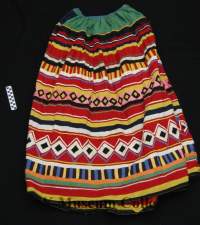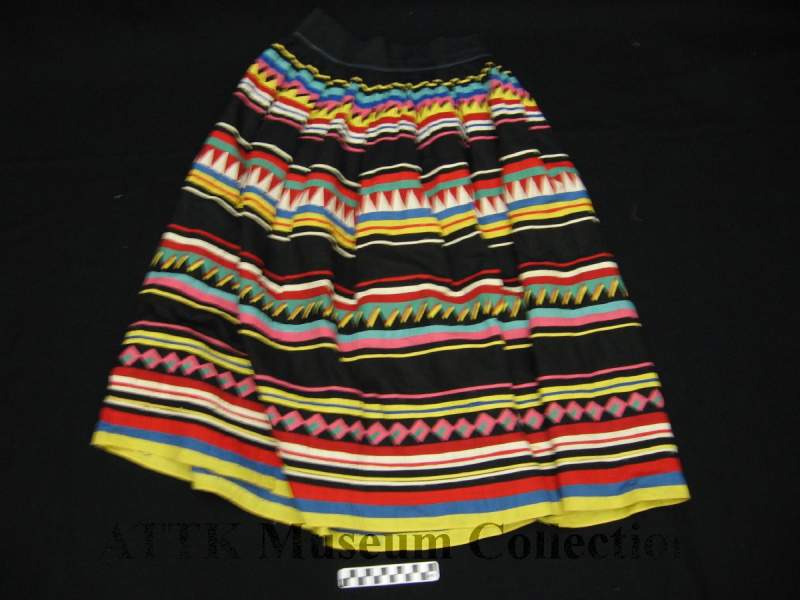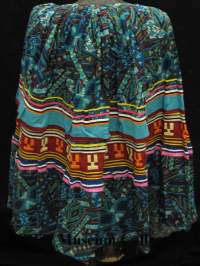Women's Skirts
The most commonly seen patchwork clothing within the Tribe is the woman’s skirt. As an article of clothing to be cut and shaped, creating a skirt is relatively simple in comparison to creating a shirt, jacket, or vest. However, a lot more complexity and creativity is goes into the skirts design because it acts as a blank canvas, allowing the maker to decide the number of bands, the size of the patchwork, and color schemes.
The length of the women’s skirt has tended to follow the larger culture’s dictates. From the 1890s through the 1930s, these skirts were all the way to the ground. The first documented patchwork appears in 1917, although the skirt is still dominated by ruffles, appliqué and calico. By the 1930’s, most Seminoles had regular interactions with non-Tribal members, either through tourist camps, trips into town, or as fellow farmers and cattlemen and women. This increased interaction affected the skirt in two ways. First, patchwork became a sellable commodity. The money from selling patchwork allowed Seminole women more time to create pieces. As with all sellers, the feedback from customers encouraged certain colors, designs, and how many pieces of patchwork are used. Particular influence also came from certain patrons of the Seminoles, like Deaconess Bedell, an Episcopalian Nun, who had strong opinions about what was ‘good’ and ‘real’ Seminole patchwork.
With the increased interaction with the American culture skirt lengths became noticeably shorter. For instance patchwork ‘poodle skirts’, just above the knee and supported with a crinoline underneath are seen during the 1950s and early 60s. Interestingly, it is more common to see woman today wearing longer skirts. Many women feel a longer skirt is more work appropriate and prefer a more conservative dress code in business settings. Also, during public and private celebrations, it is common for women to cook by log fires. Without the protective cotton, it is easy for a woman to burn her shins. Some younger women, though, do wear short skirts that come to or above the knee.
Women’s skirts now show a broad array of patchwork approaches. Brocaded and satin-based skirts can shine by the fire light. Some skirts repeat their design in multiple rows while others have one row of a complex design with two or three simpler rows. Often, skirts show two or three simple patchwork designs supported with stripes of color, ric-rac, and sometimes appliqué.



